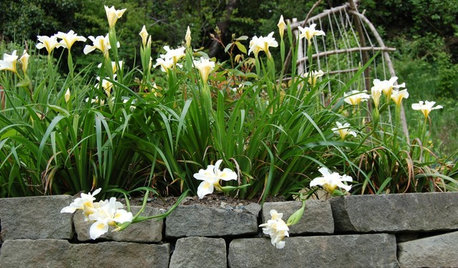Help with identification of my vine and repotting
tzobell
12 years ago
Related Stories

PLANTING IDEASGreat Garden Combo: Rose + Clematis for Small-Space Impact
We all need somebody to lean on. And when a rose supports a climbing vine, the results can totally transform a small garden
Full Story
GARDENING GUIDES6 Steps to Creating Your Butterfly Garden
Encourage these fanciful winged beauties to visit your garden while helping restore their fragmented habitat
Full Story
GARDENING GUIDESMake Sure You Read This Before Buying New Plants
Follow these 10 plant-selection tips to avoid buyer’s remorse
Full Story
HOUSEPLANTS8 Essentials for Healthy Indoor Plants
Houseplants add so much to our homes — and can thrive when grown in the right conditions. Keep these tips in mind
Full Story
EDIBLE GARDENSSummer Crops: How to Grow Tomatoes
Plant tomato seedlings in spring for one of the best tastes of summer, fresh from your backyard
Full Story
HOUSEPLANTS10 Top Plants to Grow Indoors
Brighten a room and clean the air with a houseplant that cascades artfully, stretches toward the ceiling or looks great on a wall
Full Story
CONTAINER GARDENSHappy Houseplants, Happy People
Potted plants add life and beauty to a room. Learn easy ways to keep them healthy
Full Story
GARDENING FOR BUTTERFLIESA Quick-Start Guide to Bird-Watching for Fun and Learning
Set out some seed and grab your field guide. Bird-watching is an easy, entertaining and educational activity for the whole family
Full Story
MOST POPULARHow to Get Rid of Those Pesky Summer Fruit Flies
Learn what fruit flies are, how to prevent them and how to get rid of them in your home
Full Story
GARDENING GUIDESTop 10 Native Plants for the Pacific Northwest
More than just gorgeous and adaptable, these standout plants convey a sense of place
Full Story







mark4321_gw
tzobellOriginal Author
Related Professionals
Camas Landscape Architects & Landscape Designers · Saint Matthews Landscape Architects & Landscape Designers · Towson Landscape Architects & Landscape Designers · Brentwood Landscape Contractors · Wakefield Landscape Contractors · Waterbury Landscape Contractors · Centereach Landscape Contractors · Clayton Landscape Contractors · Deerfield Landscape Contractors · Fair Oaks Landscape Contractors · Hayden Landscape Contractors · National City Landscape Contractors · Ronkonkoma Landscape Contractors · Sun City Center Landscape Contractors · Markham Landscape Contractorscliss
birdsnblooms
tzobellOriginal Author
mark4321_gw
birdsnblooms
tapla (mid-Michigan, USDA z5b-6a)
Rebekah Pruett
Tiffany, purpleinopp Z8b Opp, AL
EHH824